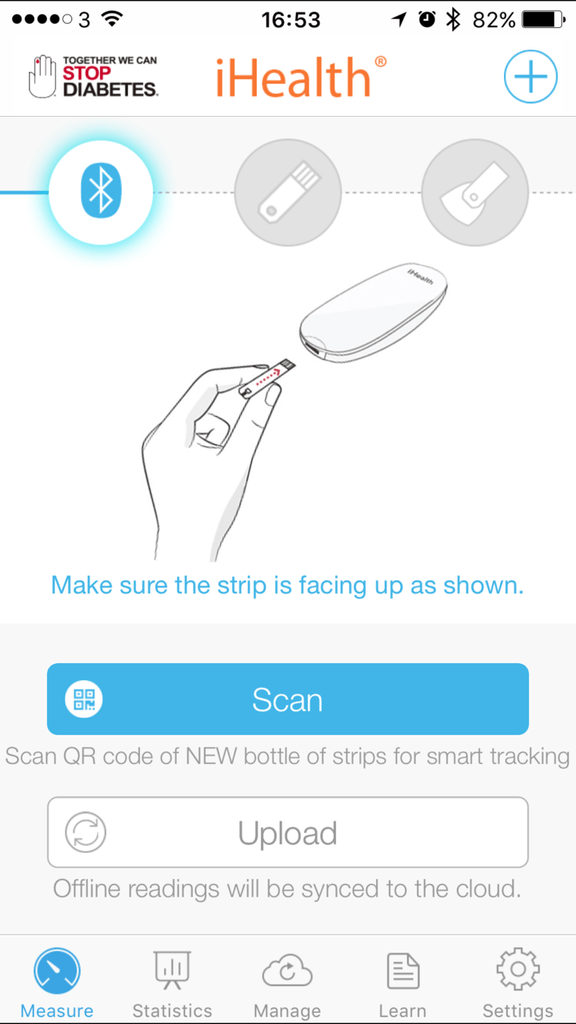
I saw this device on one of the many Diabetes websites a while back and thought the idea of it sounded great. It looked like it might even be a valid alternative to the Dario, and I finally got my hands on it about a month ago, all entirely self funded. OKay, it’s been in the wild for a while, but I wanted to try something out that was a little bit different. For once in my life I even bought the meter! That’s a level of excitement that I rarely have over Diabetes care devices. I’m not sure it has ever happened before!
The sales bumph on the iHealth website promised:
“The iHealth Wireless Smart Gluco-Monitoring System is the innovative blood glucose monitoring system that connects with your mobile device through Bluetooth technology to help you test, track and manage your Blood Glucose levels. The iHealth system works with the free iHealth Gluco-Smart App that has personalized health tools to help you get the most out of your data and to better manage your health goal. Through the app, you can easily view glucose trends over time, set test and medication reminders, track test strip quantity and expiration information and share data with your healthcare provider.”
I was looking forward to giving it a go. The package turns up in a box from Amazon as you might expect. Basically one that had been damaged in the warehouse, and I ordered 50 strips with it as well.

Following the instructions to set it up was straightforward, and I thought that this looked like it would be very easy to use. The package contained the meter, some strips, a lancing device (that is clever, but brutal compared to many others) and lancets. The phone app comes from the App Store.
Before we go into that, the basics of it are that the meter really only captures your blood and stores 500 entries. The gubbins of the work is done in the iPhone app, where you do all the trend analysis.
The meter connects to the phone via bluetooth and the app captures all the data.
The meter itself is smooth and white, with a blue display.

It takes yet another form of strip… I’m not sure whether these are availabel on the NHS, but they are similar in shape to the Roche Aviva strips and use about the same amount of blood. The meter has a funny release button on the strips, so instead of pulling them out, they can be shot out. This has generated far more amusement than it should and you get a good 75cm shot. With the blood on the end of the strip, it’s a little like low rent paintballing…
The other button on the meter is an on/off button that can be held down to pair the device via bluetooth. From an aesthetic perspective, it’s probably one of the nicer meters to look at although it’s fairly small and smooth, so those with difficulties holding things may struggle a little.
The iHealth iGluco app itself isn’t bad to use. It’s really quite clear and well laid out, and has some good trend monitoring tools. It also allows upload to a Dario-like web interface that can be used by an HCP.

With the handset connected, it prompts you to enter a strip, add blood, etc. And as I mentioned, it’s very clear. But the question I’d ask is how often you’d use the phone app when doing a test. Why? Because the bluetooth connection has proven to be less reliable than I expected. It frequently took minutes to connect and even on standard occasions, it took 30. This is three times longer than it takes to do a blood test. This aspect of the set-up is, for me, what really let it down.
The trend monitoring tools look good, and provide plenty of useful information, as you’d expect:



Leave a Reply